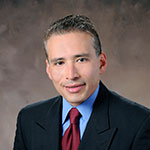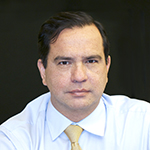Around the Norton Rose Fulbright offices in San Antonio, Mario Barrera is known as a labor and employment (L&E) law historian. Those who want to know when a certain L&E case happened or for anything involving L&E legislation ask Barrera, a partner at the firm.
Barrera began his legal career in his hometown of McAllen, Texas, at the firm of Ewers & Toothaker, focusing on employment law. When his wife was accepted to medical school in San Antonio, they relocated, and he joined Matthews and Branscomb. The labor, employment, and litigation portion of that office was ultimately acquired by Bracewell & Patterson (now Bracewell & Giuliani), where Barrera worked for 13 years. He joined Norton Rose Fulbright in 2011.
His thirty-one years of practice give him an ideal vantage point for assessing some of the major changes in L&E law. “When I first started practicing, L&E was all about unions,” he says.
Barrera says union activity continues to play a role, but now that the National Labor Relations Board is focusing on social media, employer policies concerning confidentiality, and even arbitrations, non-unionized employers have to adapt in an ever-changing landscape.
“Our kids’ ability to learn and be college- or workforce-ready depends on the quality of their education.”
“Wage and hour issues have also evolved from simply worrying about a Department of Labor audit to handling massive collective actions involving hundreds of litigants, especially since the ’08 recession,” Barrera says. Now, after the recession, he handles significantly more Occupational Safety & Health Act (OSHA) and Equal Employment Opportunity Commission (EEO) cases than he used to.
“EEO work has really mushroomed. The increase began in 1990, when legislation amended the 1964 Civil Rights Act to allow EEO claimants to have their cases heard by a jury,” he explains. “Prior to that, EEO cases went before a judge.”
Barrera’s practice has also been dramatically affected by changes in OSHA. “In the last two to three years, there has been a significant increase in funding for OSHA, which has led to an increase in inspections. The focus has also changed due to new industries. For example, many of the early cases involved construction, refineries, and agriculture, whereas today, a lot of OSHA claims in Texas involve fracking.”
“It has also been interesting to see and participate in the evolution of the Civil Rights Act, which at the state level is Chapter 21 of the Texas Labor Code,” Barrera says. “In the beginning, there were just five protected categories: race, religion, sex, color, and national origin—and even those prompted a lot of controversy. But, bit by bit, those categories have been expanded. Age was added in 1967, pregnancy in 1978, disability in 1990, family/medical in 1993, and genetic testing in 2008.”
Barrera is widely respected for his levelheadedness when it comes to various “hot” social issues—affirmative action, for instance. Hispanics make up 38 percent of the population in Texas (versus 40 percent for Caucasians). But even though they already comprise the majority (51 percent) of students in Texas’s public schools, they represent just 17 percent of the enrollment at the University of Texas. This is in spite of the fact that UT does consider an applicant’s ethnic background in its admission policy—a practice that was upheld in a July 2014 ruling by the fifth US Circuit Court of Appeals.
“The opinions on this issue are as varied as the individuals involved,” Barrera admits. “When I was applying for college and law school, admission policies were pretty much governed by affirmative action. I’d love to think that my ability to get into law school was based solely on my GPA, LSAT score, and personal achievements, but in 1980, when I applied, the fact that I was Hispanic played a role. Affirmative action has given a lot of minorities—African Americans, Hispanics, Asians—opportunities that we wouldn’t have otherwise had. I can’t deny that it helped get me where I am today.”
“When you consider the barriers to immigrating lawfully, such as the timetable to citizenship, and the costs and quotas, one can certainly understand the frustration that leads to illegal immigration.”
Another challenging area for Texas is immigration. Barrera, a first-generation immigrant himself, considers the issues objectively and concludes that reform is necessary. On the one hand, border states carry the burden of illegal immigrants putting a strain on resources, but on the other hand, “people are trying to come here to better themselves,” says Barrera. “When you consider the barriers to immigrating lawfully, such as the timetable to citizenship, and the costs and quotas, one can certainly understand the frustration that leads to illegal immigration.”
To overcome his own frustrations with a broken system, Barrera contributes to his community where he feels the most impact can be made: education.
Barrera sits on the advisory boards of the San Antonio branch of School Leaders Network, the citizens oversight committee of the San Antonio Independent School District (SAISD), the SAISD Foundation, and the educational committee of the San Antonio Chamber of Commerce (SACC)—while serving as legal counsel and board member for SACC.
“I spend most of my spare time on educational issues,” Barrera says. He lives just north of downtown San Antonio, in the inner-city school district, and feels compelled to help out in his own neighborhood.
“Our kids’ ability to learn and be college- or workforce-ready depends on the quality of their education,” Barrera says. “We still have a long way to go in that area.”
He is also committed to helping shape his alma mater, the University of Texas Law School, and goes back frequently to mentor students in the Chicano/Hispanic Law Students’ Association.
“A lot of the students just need a sounding board about the choices that are open to them. It helps them to have someone to talk to who has been there,” Barrera says.

